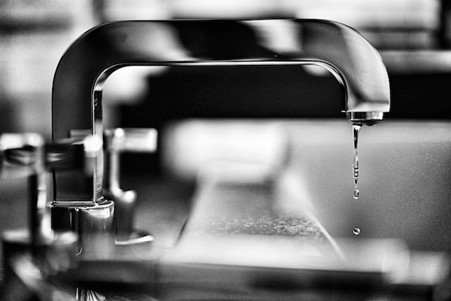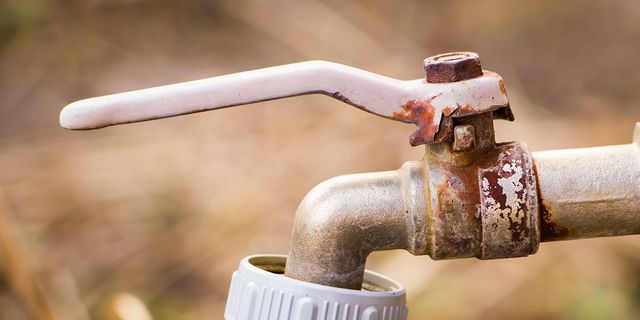Solving Plumbing Issues in Older Homes: A Comprehensive Guide
Solving Plumbing Issues in Older Homes: A Comprehensive Guide
Blog Article
Have you been interested in advise around Common Plumbing Challenges In Old Buildings?

Older homes usually include charm, character, and background, but they can additionally bring a host of pipes issues. Whether you're managing aging pipes, low tide pressure, or leakages, knowing just how to deal with these usual issues is important to maintaining a risk-free and functional home. In this overview, we'll explore the normal plumbing obstacles dealt with by older homes and give useful solutions to keep your pipes in top form.
Comprehending Usual Plumbing Concerns
Aging Pipes
One of one of the most common concerns in older homes is aging pipelines. Depending on the age in which your home was constructed, the pipes could be made from products that have actually weakened gradually, such as galvanized steel, cast iron, and even lead. These materials can rust, come to be fragile, or create leaks, resulting in water damages and potential health hazards.
Water High Quality Screening
Older pipes can influence the quality of your water. Conduct a water high quality examination to look for impurities such as lead, corrosion, or other contaminations that might be introduced by maturing pipes.
Solutions for Typical Pipes Problems
Changing Aging Pipes
If your home has old, wearing away pipes, think about changing them with modern products like copper or PEX. This can be a considerable financial investment, yet it will stop future issues and enhance the safety and security and dependability of your plumbing system.
Dealing With Low Tide Pressure
To fix low tide pressure, beginning by cleaning or replacing old fixtures and eliminating mineral accumulation in the pipelines. If the problem lingers, it might be necessary to replace sections of corroded pipes.
Repairing and Replacing Dripping Pipes
For little leakages, you can utilize pipeline clamps or epoxy putty as a momentary solution. Nevertheless, it's finest to change dripping pipes completely to prevent additional damage.
Updating Components
Upgrading old fixtures to modern, water-efficient models can improve your home's plumbing performance and reduce water consumption. Look for components with the WaterSense tag for the very best effectiveness.
Taking Care Of Pipeline Deterioration
If your pipelines are rusted, replacing them with corrosion-resistant materials like copper, PVC, or PEX is the best solution. Routine evaluations and water quality maintenance can aid protect against better deterioration.
Low Tide Stress
If you're experiencing low water pressure, it could be as a result of natural resources, deterioration inside the pipelines, or old fixtures that are no longer functioning efficiently. This can be a significant trouble, particularly in locations like showers and sinks.
Leaking Pipelines
Leakages are one more frequent problem in older homes, often caused by rusty or damaged pipelines. Even small leaks can result in considerable water damages, mold and mildew development, and raised water expenses if not dealt with quickly.
Outdated Components
Out-of-date pipes components such as faucets, bathrooms, and showerheads not only look old however might also be less effective, susceptible to leakages, or incompatible with contemporary plumbing requirements.
Pipeline Rust
Corrosion is a common trouble in older pipelines, specifically those made from galvanized steel or actors iron. Corroded pipelines can restrict water flow, cause discoloration, and at some point cause leakages or pipe bursts.
Examining the Problem of Your Plumbing
Evaluating Noticeable Pipelines
Begin by inspecting any noticeable pipes in your home, such as those in basements, crawl spaces, or under sinks. Seek signs of corrosion, leakages, or rust, which can indicate underlying problems.
Checking for Leaks
Check for leaks by evaluating locations around taps, bathrooms, and under sinks. You can additionally check your water meter before and after a period of no water make use of to spot concealed leakages.
When to Call a Specialist
While some pipes issues can be managed with do it yourself remedies, there are times when it's finest to call a professional. If you're dealing with significant leakages, considerable rust, or are unclear regarding the condition of your pipes, a licensed plumbing technician can offer professional assessment and repair service.
Preventive Maintenance Tips
Regular Assessments
Routinely check your plumbing system for indications of wear and tear. Capturing concerns early can protect against expensive repair work down the line.
Water Stress Guideline
Ensure your water pressure is within the suggested variety to avoid stressing your pipes and fixtures. A plumbing technician can set up a stress regulatory authority if required.
Water High Quality Upkeep
Set up water filters or softeners if your water high quality is poor. This can safeguard your pipes and fixtures from damage caused by hard water or pollutants.
Aggressive Pipeline Replacement
If your home has older pipes, think about positive substitute before major issues arise. This can save you from emergency situation fixings and water damages.
Conclusion
Handling plumbing issues in older homes requires a mix of alertness, preventative maintenance, and timely upgrades. By understanding the typical difficulties and knowing when to look for expert assistance, you can guarantee your plumbing system remains useful and reliable for several years ahead.
Common Plumbing Issues in Older Homes and How to Fix Them
Owning an older home in Australia comes with its unique charm and a set of challenges, especially when it comes to plumbing. The Sunshine Coast has many older properties that can harbour plumbing problems that aren t just inconvenient but potentially costly. Here s a look at some common plumbing issues in older homes and expert advice on how to handle them.
Outdated Piping Materials
Many older homes were built with galvanised steel, cast iron, or even lead pipes, materials that are far from ideal by today s standards. Galvanised pipes are prone to corrosion and clogging, while lead pipes pose serious health risks.
How to Fix:
Replacing old pipes is a job for a professional. Upgrading to copper or PVC piping not only enhances water quality and flow but also increases the property s safety and value. If you suspect your home has outdated materials, a licensed plumber can conduct a thorough inspection and recommend the best course of action.
Corrosion and Pipe Degradation
Over time, exposure to water and minerals can cause pipes to corrode, leading to leaks, bursts, and water contamination. Corrosion is especially common in homes over 50 years old.
How to Fix:
Regular inspections can catch early signs of corrosion. If corrosion is found, the affected section of piping often needs to be replaced. For homes with extensive corrosion, a complete plumbing overhaul might be necessary. It s crucial to consult with a plumbing expert to understand the extent of the issue.
Tree Root Intrusion
Older neighbourhoods usually have mature trees whose roots can intrude into pipe lines, causing blockages or damage. This is particularly problematic for sewer lines, where roots seek out water sources.
How to Fix:
A plumber can use a specialised camera to inspect sewer lines for root intrusion. If roots are a problem, methods like root cutting or hydro-jetting can clear the obstruction. In severe cases, part of the pipe may need replacing. Consider root barriers around the piping to prevent future issues.
Inadequate Water Pressure
Low water pressure in older homes can be due to various factors, including corroded water lines, sediment build-up in pipes, or outdated fixtures.
How to Fix:
First, check if the low pressure is isolated to one area or throughout the house. Replacing old fixtures can sometimes resolve the issue. However, if the problem is more widespread, it might be due to sediment or corrosion. Flushing the system or replacing the affected pipes usually restores normal pressure. Again, a professional assessment is advisable.
Outdated Fixtures
Older homes often feature fixtures that are not only visually dated but functionally inefficient. This includes everything from toilets and taps to showerheads and washing machine hoses.
How to Fix:
Updating these fixtures can improve both water efficiency and the aesthetic appeal of your home. Modern fixtures are designed to conserve water, which can significantly reduce your water bill and lessen your environmental impact.
Conclusion
Maintaining the plumbing in an older home requires a proactive approach. Regular checks and updates are key to preserving these beautiful properties. If you re facing plumbing issues in your older home, it s best to call on experienced professionals like Green & Gold Plumbing & Gas. With the right expertise, even the most daunting plumbing problems can be resolved, ensuring that your home s character is maintained while its functionality is enhanced.
https://gandgplumbing.com.au/common-plumbing-issues-in-older-homes-and-how-to-fix-them/

As a passionate reader about Common Plumbing Challenges In Old Buildings, I assumed sharing that piece of content was really helpful. Loved our write-up? Please quickly share it. Help other people find it. Thank you so much for taking the time to read it.
Schedule Service Now Report this page